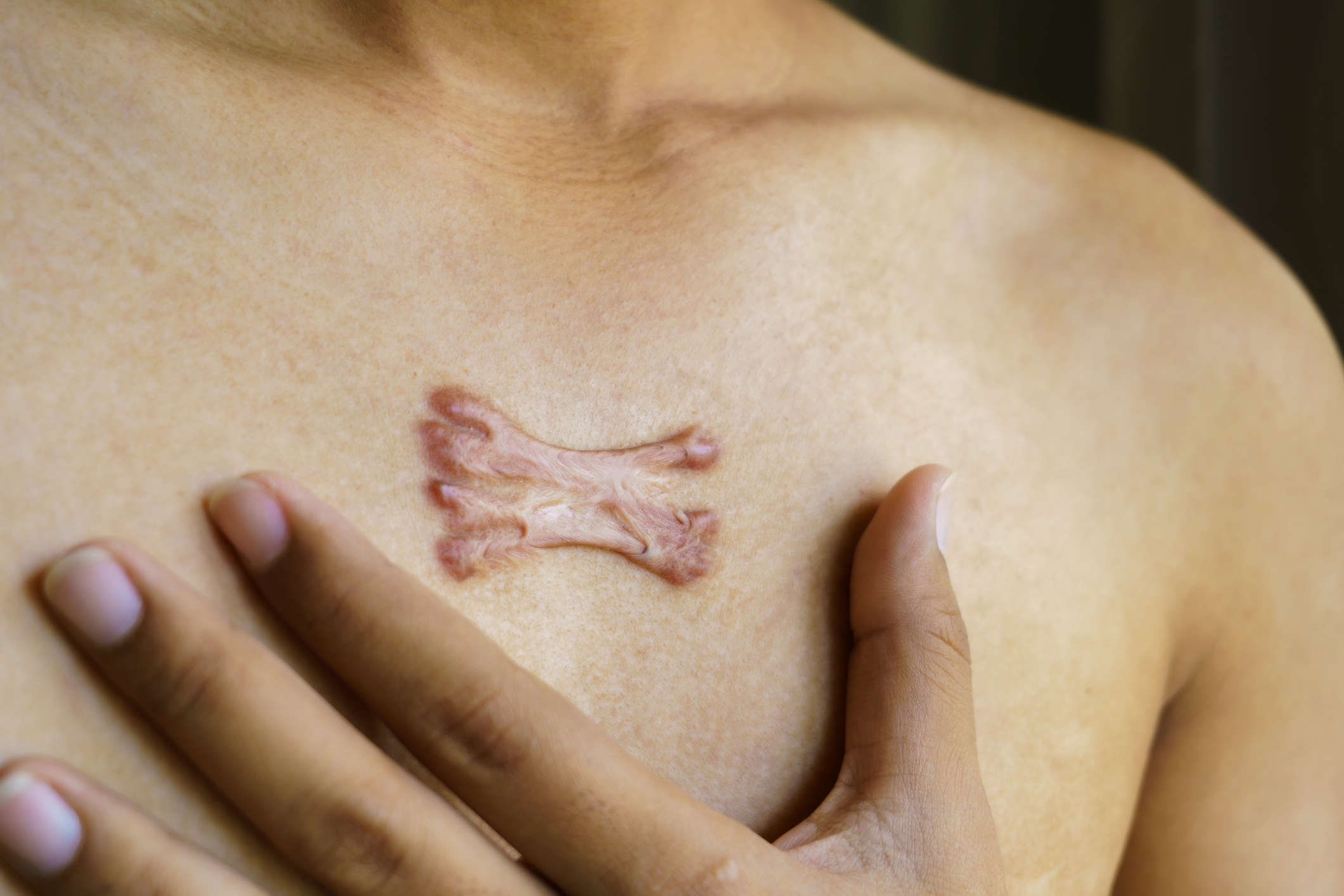Keloids
What are keloid scars, what are the causes and what is my approach is to treatment?

All wounds heal through the process of scar formation. Keloid scars are lumpy, unsightly scars that can extend beyond the site of the original injury.
What causes keloid scars?
The development of a keloid scar can be triggered by any injury including:
- Surgery
- Piercings
- Acne
- Chicken pox
- Tattoos
Even relatively minor inflammation which is not noticeable in itself may be enough to trigger keloid scarring in certain invividuals.
The precise cause of keloid scarring is not yet understood, however certain factors increase the risk:
- Previous keloids scars: If you have suffered from keloid scars elsewhere on the body then you are at greater risk of developing further keloid scars and should consider avoiding non-essential skin trauma such as piercings, tattoos and cosmetic surgery.
- Family members with keloid scars: If other members of your family are affected then you are at greater risk of developing keloid scars.
- Darker skin type: Keloids can be seen in individuals of any skin color but are more common in those with darker skin types.
- Body site: Certain body sites - such as the central chest, back, shoulders and ear lobes have a particular tendency to form keloid scars.
- Age: Keloids are more common in individuals below the age of 30.
What are the symptoms of keloid scars?
Keloid scars are lumpy and can be unsightly. They can also appear redder than the surrounding skin. Keloid scars can also cause itching, a burning sensation or even pain.
How do I treat keloid scars?
Treatments can be divided into two groups: (i) methods for fully removing the keloid scar (ii) methods for reducing the size of the keloid and improving symptoms. Whilst it is straightforward to remove keloid scars there is a significant risk that they can recur and unfortunately if they do recur the keloid can be larger it was prior to treatment. For this reason, it is not advisable to proceed with keloid removal without combining this with a method to reduce the risk of recurence.
Treatments to remove keloids:
- Surgical excision with postoperative steroid injections (usually monthly for several months). Postoperative steroid injections reduce, but do not eliminate, the risk that the keloid may recur - in some cases a long time after the surgery.
- Carbon dioxide laser excision with postoperative steroid injections. Laser surgery can be used to excise keloids on any site but is particularly helpful for larger keloids on the body.
- Excision by surgery or laser surgery with postoperative radiotherapy. This has the lowest risk of keloid recurrence, however radiotherapy is associated with a small increase in the risk of cancer and is not suitable for all body sites. You will need to meet with an oncologist to discuss the risks and benefits prior to surgery.
Treatments to reduce the size / improve symptoms:
- Steroid injections: A course of steroid injections (usually monthly) can flatten and reduce the size of keloids and improve symptoms such as itching or pain. They are unlikely to worsen the keloid, however there is a risk that the keloid will recur when steroid injections are discontinued.
- Pulsed dye laser: This form of laser does not remove the keloid but instead targets blood vessels within the keloid which can reduce the size. A series of treatments (usually 4-6 weekly) is required. I find this to be of particular benefit for redder keloids. It is often combined with steroid injections.
- Freezing with liquid nitrogen (cryotherapy): This is only really suitable for smaller keloid scars and has a risk of recurrence.
- Steroid creams / tape: These work in a similar way to steroid injection but are less likely to be effective since they do not penetrate as deeply into the keloid.
- Pressure earrings: These are available online and there is some evidence for benefit, however there is a significant risk of recurrence when use is discontinued.
